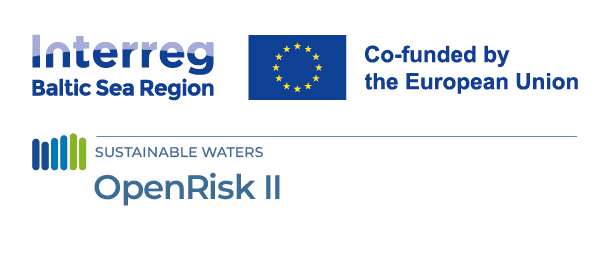
Highlights from OpenRisk II Kick-Off Conference: Advancing Maritime Risk Management Tools and Addressing End User Needs
25 March 2024
The two-day OpenRisk II Kick-Off Conference “New Maritime Risk Management Tools & End User Needs” was organized on the 6 – 7 March 2024 in Helsinki, Finland. The conference was co-organized together with the lead partner Finnish Transport and Communications Agency Traficom, and the project partners University of Helsinki and the Northern Dimension Partnership on Transport and Logistics (NDPTL) Secretariat.
OpenRisk II project is co-funded by the EU Interreg BSR programme 2021-2027 with a total budget around 2 Meur. The duration of the project is from November 2023 to October 2026.The project equips competent maritime authorities and intergovernmental organisations with the risk assessment and risk management tools and thus helps to minimise maritime accidents and their footprint on the marine environment. Project consortium includes 7 partners that are the Lead Partner Finnish Transport and Communication Agency Traficom (Finland), Aalto University (Finland), Norwegian Coastal Administration (Norway), Gdansk University of Technology (Poland), University of Tartu (Estonia), University of Helsinki (Finland), and the Northern Dimension Partnership of Transportation and Logistics (NDPTL) Secretariat (intergovernmental).
The Kick-Off Conference brought together 62 registered participants, comprising anticipated end users of the project outputs, partner institutions, and various stakeholders. Its primary objective was to identify end-user requirements within Maritime Risk Management and translate these insights into developments for the OpenRisk II project implementation plans and solutions. All project partners actively contributed to planning and executing conference activities and group works.
The first day was dedicated to identifying end user needs, with speakers and panelists from EU and intergovernmental organizations and initiatives (EMSA, IALA & HELCOM) as well as competent national administrations from Norway and Finland. The first day concluded with a panel discussion to delve deeper into the International, EU and regional user needs as well as the planned OpenRisk II Outcomes. The second day included targeted Group Works to gather more detailed feedback and comments on the three key project products and their desired features.
Please find the comprehensive Conference Summary Report here, which includes summaries of the Group Work, lists of participating organizations, and presentations.
Additionally, you can access the full list of conference presentations and their respective links below:
Presentation 1_Welcome_Sakari Kuikka
Presentation 2_Traficom introduction_Valtteri Laine
Presentation 3_ISO 31000 Standard and FSA_Filip Zarzycki
Presentation 4_IALA Risk Management Toolbox_Sarah Robinson
Presentation 5_EMSA supporting Marine Pollution Risk Assessment_Victor Diaz Seco
Presentation 6_HELCOM_Response and Risks_Markus Helavuori
Presentation 7_Fintraffic_Esa kallio
Presentation 8_Automated calculation of risk related to ship traffic_Jon-Arve Røyset
Presentation 9_Overview of the OpenRisk II project_Mirka Laurila-Pant
Presentation 10_AISyRISK Baltic & Ice module_Osiris Valdez Banda_Jon-Arve Røyset_Jakub Montewka
Presentation 11_Regional service on ecosystem sensitivity to spills_Anneliis Koivupuu
Presentation 12_Environmental sensitivity_Sakari Kuikka
Presentation 13_A Risk Maturity Model_Valtteri Laine
Presentation 14_Pre-Conference Questionnaire Results_Jaana Haavisto
Presentation 15_Previous research on oil spill decision analysis_University of Helsinki
by Mirka Laurila-Pant





